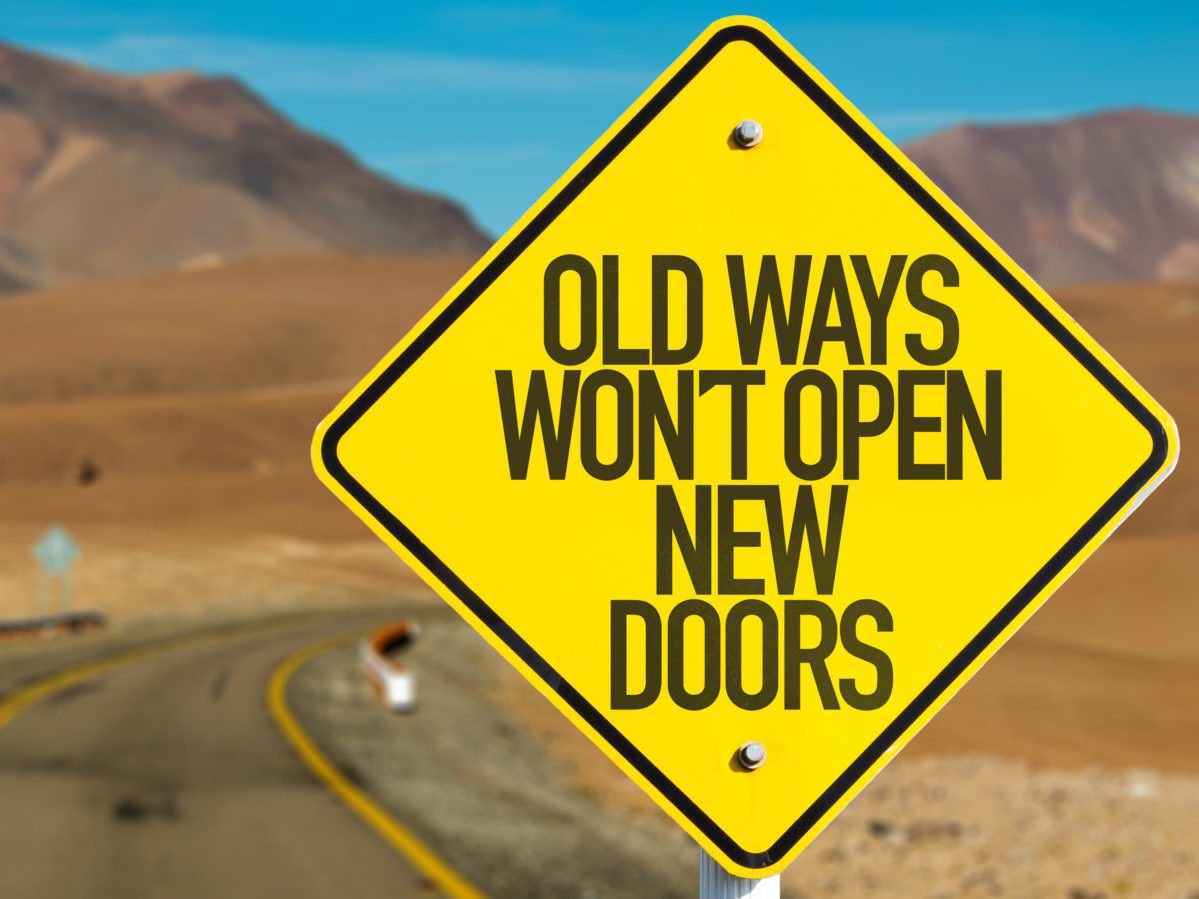
Raiford Smith, VP of Energy Technologies and Analytics at Entergy, shares insights based on his experiences with analytics and change management.
One of my favorite childhood songs was Elmo & Patsy’s Grandma Got Run Over by a Reindeer. It was full of crazy verses about a grandmother’s fatal encounter with Santa Claus. Of course, the song was meant to be silly, and I certainly didn’t believe that a.) Santa was real and b.) Santa’s flying sled and nine rambunctious reindeer could run someone over.
At work, sometimes new ideas can feel a lot like that song – fun and entertaining but not entirely realistic. Other times, new ideas can leave you feeling like Grandma – run over and left with only fond memories of how things used to be. New ideas always bring change and change can be painful. What follows are five lessons about change management I’ve learned over the course of my career. I learned them all the same way – I failed. But if you’ve been trampled by someone named Blitzen or if you’re looking to avoid the pain that can come from change, this short article might provide some useful guidance.
Lesson 1: The Personal Ingredients for Success are Capability, Guidance, and Support
The first lesson I learned is about what each employee needs to succeed. Whether you are a purple squirrel, a unicorn, or a rock star, the change hitting our industry today can derail even the savviest employee.
During one such assignment, a sage industry veteran told me all employees, no matter the level or role, need three things to be successful: a capability to do the work, clear guidance, and support for when the going gets tough. She was right. Even a rock star with a PhD in Electrical Engineering and 30 years of industry experience can get blown up if they lack the capacity to do the work, direction from above, or insulation from drama.
Possessing any single component is not enough to overcome tough obstacles, nor insulate one from the slings and arrows of change; even if you’re armed with two out of the three elements, one can still get hamstrung. So, before jumping headlong into a new assignment, make sure you’ve got the right level of capability, guidance, and support to be successful.
Lesson 2: Balance Corporate Culture between Agility and Consensus
Company culture, just like ingredients listed above, can also impact success. Technology and customer needs are changing rapidly these days, disrupting mature industries and once-sound business practices. Many companies respond by promoting a culture of agility and innovation, but a hallmark of mature industries is the need for consensus-building.
Don’t get me wrong, consensus has benefits. It can de-risk a choice by getting many people to evaluate benefits and risks and to agree on a course of action. But the cost of gaining alignment is that innovation is often watered down and new ideas are subject to numerous “near-death” experiences (if not killed outright).
Agility, on the other hand, runs counter to many of the tenants of consensus-building. In fact, the Agile Manifesto , a document codifying the key principles of an agile culture, states customer collaboration and multiple, quick, incremental improvements are critical to delivering desired outcomes.
The culture at disruptive companies doesn’t hold innovation back until everyone has agreed. Those companies are willing to do what others can’t or won’t. Sometimes that strategy ends in an explosion and other times a ticker-tape parade.
If our industry stands still, we will be little more than the proverbial deer in headlights, but casting away all risk management is also unwise. Thus, an agile culture that runs on a sense of urgency can help you play offense rather than defense, but it must be balanced with risk management.
Get 15% off UA Week Registration with code UAIPOST
Lesson 3: Have a Compelling, Coherent Vision and Communicate It Relentlessly
Effective communication is another necessary skill to master. One great lesson comes from Tom Fanning, the current CEO of Southern Company. Earlier in his career, he became CIO and was fond of saying we should, “Communicate relentlessly.”
He was on to something. When he joined the Information Technology (IT) organization, he had no technical background but was tasked with transforming a moribund organization on the verge of outsourcing. Tom came up with a vision for how IT ought to run, boiled it down to a single sentence, and repeated it over and over again. It worked, and in a couple of years, IT was no longer a series of quarrelsome fiefdoms. IT had become an innovator and leader. Everyone knew the vision and how they contributed because Tom repeated it often and used it to shape everything IT did.
So, if you have to transform something, communicate relentlessly where the transformation should take you. Good communication can help you bring others along on your journey.
Lesson 4: Planning, Not Plans
Former President and General Dwight D. Eisenhower once said, “In preparing for battle, I have always found that plans are useless, but planning is indispensable.” In battle, Eisenhower argued a plan, the output from the process of planning, quickly became obsolete as conditions changed and combatants adjusted their strategies.
Planning, on the other hand, was a continual cycle of reflection and revision. Planning allowed subordinates and allies to understand a common objective but to inject some creative flair into how they achieved it.
Eisenhower shunned rigid adherence to a plan. Creative thinking via continual planning, on the other hand, was favored in dealing with an ever-changing landscape. Thus, taming the chaos of today’s business environment can best be done via planning, rather than conforming to a brittle idea that breaks when conditions change.
Lesson 5: Innovation Can Live Here (If You’re Willing to Accept Some Risks)
Many companies are looking for partners to embark on developing a new capability. Such collaboration leads to risk-sharing, reduced costs, and leveraging the talents of multiple organizations. Demonstrating a willingness to try (and to fail) can be the key to bringing these companies to your door.
However, when faced with something new, plenty of people will line up to point out what’s wrong. As French philosopher Jean-Paul Sartre said, “Only the guy who isn’t rowing has time to rock the boat.”
So make sure you bake some flexibility and acceptance of risk into any new idea. You will inevitably need it. Such flexibility can help set expectations appropriately and make sure everyone’s actively rowing instead of worrying.
Raiford Smith is Vice President of Energy Technology and Analytics at Entergy. He works out of Entergy’s offices in The Woodlands, TX and has been in the utility industry for 28 years. Raiford will be speaking at Utility Analytics Week, October 24-26 in Orlando, Florida.
Register with code UAIPOST before September 12th to receive an additional 15% off of our Early Bird 20% discount!
note: This discount code is valid for 15% off the registration package fee and cannot be combined with any other discount code.















